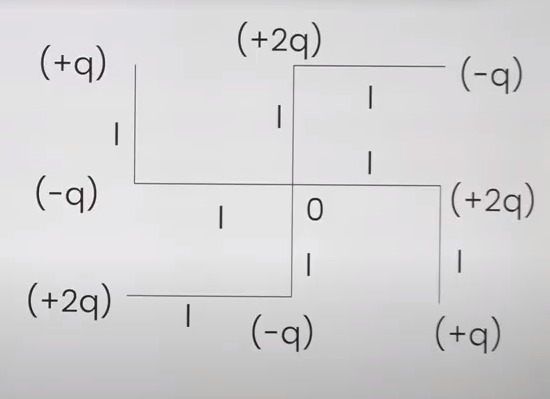In a second-order lever, if the length of the load arm is 5 cm, the length of its effort arm cannot be _______.
4 cm
6 cm
10 cm
20 cm
The correct Answer is:A
To solve the question regarding the second-order lever, we need to understand the relationship between the load arm and the effort arm.
1. Understanding the Lever: A second-order lever has the load placed between the effort and the fulcrum. In this case, we have the load arm length given as 5 cm.
2. Mechanical Advantage: The mechanical advantage (MA) of a lever is given by the formula:
MA=Effort ArmLoad Arm
For a second-order lever, the mechanical advantage is always greater than 1.
3. Setting Up the Equation: Since the load arm is 5 cm, we can express the mechanical advantage as:
MA=Effort Arm5
To satisfy the condition that the mechanical advantage is greater than 1, we can set up the inequality:
Effort Arm5>1
4. Solving the Inequality: To find the minimum length of the effort arm, we multiply both sides of the inequality by 5:
Effort Arm>5
This means that the effort arm must be greater than 5 cm.
5. Conclusion: Therefore, the length of the effort arm cannot be less than or equal to 5 cm. Specifically, it cannot be 4 cm or any value less than 5 cm.
Final Answer:
The length of its effort arm cannot be 4 cm.
MA=Effort ArmLoad Arm
For a second-order lever, the mechanical advantage is always greater than 1.
MA=Effort Arm5
To satisfy the condition that the mechanical advantage is greater than 1, we can set up the inequality:
Effort Arm5>1
Effort Arm>5
This means that the effort arm must be greater than 5 cm.
The length of its effort arm cannot be 4 cm.
Topper's Solved these Questions
- SIMPLE MACHINESBOOK - PEARSON IIT JEE FOUNDATIONCHAPTER - SIMPLE MACHINESEXERCISE - Level- 2
25 Videos
- SIMPLE MACHINESBOOK - PEARSON IIT JEE FOUNDATIONCHAPTER - SIMPLE MACHINESEXERCISE - Level- 3
10 Videos
- SIMPLE MACHINESBOOK - PEARSON IIT JEE FOUNDATIONCHAPTER - SIMPLE MACHINESEXERCISE - Essay Type Questions
3 Videos
- MODERN PHYSICSBOOK - PEARSON IIT JEE FOUNDATIONCHAPTER - MODERN PHYSICSEXERCISE - Level 3
5 Videos
- WAVES MOTION AND SOUND BOOK - PEARSON IIT JEE FOUNDATIONCHAPTER - WAVES MOTION AND SOUND EXERCISE - Level 3
10 Videos
Similar Questions
A crowbar of length 120 cm is used as a second - order leaver to move a rock. If the load arm is 30 cm and the amount of force required to move the rock is 1000 N, find the minimum effort required to move the rock
View SolutionThe length of the effort arm is greater than that of the load arm in a second-order lever.
View Solution
Knowledge Check
If the effort arm of a lever is twice of its load arm, it is a ____.
AFirst-order leverBSecond-order leverCThird-order leverD1 or 2arm's length
Achecking the length of fabricBas close as oneCavoiding too much closenessDusing one's arm to measure lengthIf the effort arm of a lever is twice of its load arm, it is a ____.
AFirst-order leverBSecond-order leverCThird-order leverD1 or 2
Length of each arm is 'l' find →E at O

View SolutionFind the MA of first-order lever of length 50 cm, if the fulcrum is exactly midway between the effort and load.
View SolutionIf we compare the effort arm length with the load arm length in a class 1 lever,________
View SolutionThe length of one side of a rhombus is 6.5 and its altitude is 10 cm. If the length of its diagonal be 26 cm, the length of the other diagonal will be :
View SolutionIf two sides of a tringle are of length 5 cm and 1.5 cm, then the length of third side of the triangle cannot be
View Solution